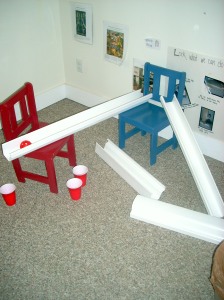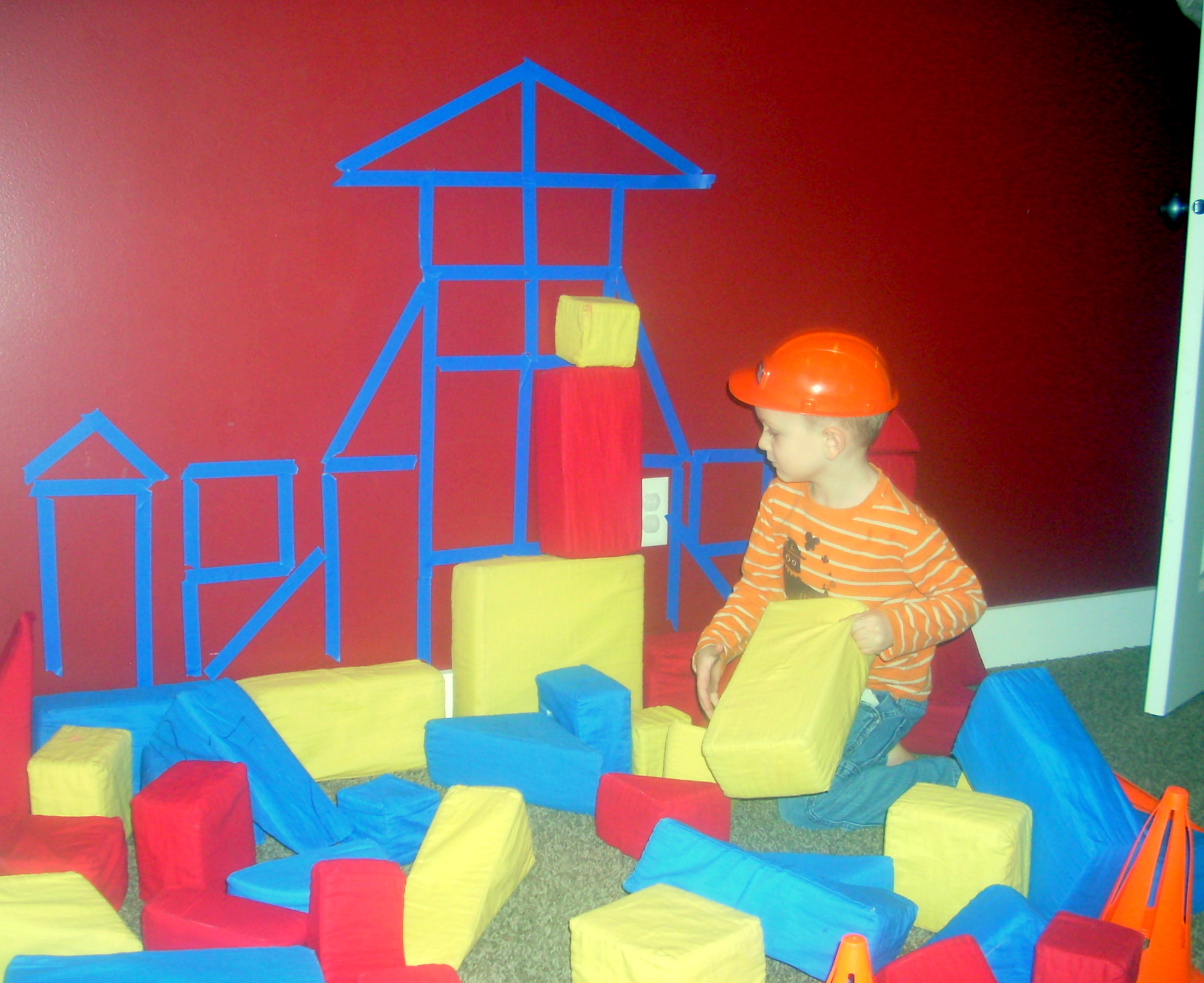This clip is from the Bowling Green State University Child Development Center home page covering a FEW of the things that children gain from playing in these areas. It covers all Learning Areas, so check it out! I've chosen to include only the portion here on Blocks. Click on the link below for the entire article.
Blocks 

- symbolic representation
- patterns
- symmetry
- planning
- balance
- size relations
- trial and error
- problem solving
- interaction of forces
- pre-math concepts-more, less, number, etc.
- visual perception
- hand/eye coordination
- classification
- cooperation
- self-esteem
- completion
In construction activities, children create models that represent their internal vision of an object or event. This is the concrete way in which children symbolize the world; and it is a highly creative process. When children build out of real materials the models that originate in their minds, they must draw on other abilities as well, such as creativity, imagination, aesthetic appreciation, fine and gross motor and perceptual skills, planning, language and often social interaction techniques. As children construct something out of paper and paste, clay or blocks, they coordinate all aspects of the self. It is this synthesizing characteristic that explains the importance of construction within our program.















